#filipendula rubra
Explore tagged Tumblr posts
Text

Filipendula rubra, also known as Queen of the prairie. (More like Queen of the Faery right?)
#pennsylvania#flowers#garden#filipendula rubra#queen of the prairie#july#gardeners on tumblr#plantblr#pink
372 notes
·
View notes
Text

Filipendula rubra / Queen-of-the-Prairie at the Sarah P. Duke Gardens at Duke University in Durham, NC
#Filipendula rubra#Filipendula#Rosaceae#Queen-of-the-Prairie#Queen of the Prairie#Native plants#Native flowers#Wildflowers#Plants#Flowers#Nature photography#photography#photographers on tumblr#Sarah P. Duke Gardens#Duke Gardens#Duke University#Durham#Durham NC#North Carolina#🌺🌻
9 notes
·
View notes
Text


Filipendula rubra - Queen of the Prarie

Bonus spider friend who's set up in the leaf.
#From my garden#native plants illinois#plant#garden#I don't know who the spider is#filipendula rubra#filipendula
3 notes
·
View notes
Text
Filipendula Rubra - Queen of the Prarie
Native
Rose family (Rosaceae)



Notes: I didn't take a pic of this one in bloom this year so you'll have to do with last years bloom. The plant this year is going crazy and has reached over 6 ft and is leaning now. We've also picked up two more bare-roots because the plant is wind-pollinated and we're hoping they're successful. Also bonus spider :3
#Filipendula Rubra#Queen of the Prairie#Rosaceae#Rose Family#Native#In yard#Planted 2023#June#July#Pink#Endangered#Illinois native plant#z6#I planted this
0 notes
Text

Filipendula rubra
Filipendula rubra, also known as queen-of-the-prairie, is a species of flowering plant in the family Rosaceae native to the northeastern and central United States and southeastern Canada. It prefers full sun or partial shade and moist soil, but tolerates drier soil in a shadier location. It grows tall and firm, and produces blooms that are tiny and pink above its ferny, pointy leaves.
#Filipendula rubra#queen-of-the-prairie#species#flowering plant#Rosaceae#northeastern#central#United States#southeastern#Canada
3 notes
·
View notes
Photo






Spotted joe pye starting up and queen of the prairie finishing from back in late July, 2020
Filipendula rubra , Eutrochium maculatum
#Filipendula rubra#filipendula#eutrochium#eutrochium maculatum#botany#plantblr#ecology#wildflowers#ohio
27 notes
·
View notes
Photo

Filipendula purpurea elegans. A more compact plant for the moist location or the streamside planting, or a swale where moisture is abundant. Fluffy rich pink flowers from late July to late August with red hazy seed heads well into September. Attractive foliage, not a spreader like F. rubra it stays in its place which could be appropriately the front of the garden where it’s mounds of deeply cut foliage have a pleasing form in the early season before flower. Some newer varieties have more intense pink color.
53 notes
·
View notes
Text

100 wunderbare Wiesenkräuter, Wildblumen und Gräser die einzelne Trittsteine im Verbund mit anderen „Wilden Oasen“ als Überlebensbrücken zu bilden ermöglichen, können in Deinem Garten oder Blühstreifen, der für das Überleben von Tieren und Pflanzen in dieser Biodiversität, (Bio-Vielfalt) sorgt, auch mit viel Geduld wirksam entstehen.
Möglichst dann auch von Heckenschutz, Feuchtbiotopen und Baumbeständen begleitet in bester „Schutz- und Nutz-Gesellschaft“, die für Flora und Fauna in einem lebhaften Naturkreislauf sehr geeignet sind.
Unten in der Aufzählung ein paar Tipps, die ich im Internet von Manfred Vogt mit seinem OK zur Veröffentlichung für Euch „eingesammelt“ habe. ;)
-
—> Wer Sämereien davon sammelt und abgibt, bitte melden!
—> Wer Fläche für Wildwiesen zur Verfügung stellen möchte (auch die Gemeinde ist angesprochen!) und diese mit anderen Menschen aufbauen, schützen und erhalten möchte, bitte auch melden!
-
Hier nun die versprochenen 100 Wiesenkräuter, Wildblumen und Gräser:
Kreuzenzian
Helmknabenkraut
Teufelsabbiss
Kugelblume
Ästige Graslilie
Astlose Graslilie
Bergaster Aster amellus
Bergsandglöckchen
Orangerotes Habichtskraut
Wiesenflockenblume
Knöllchensteinbrech
Schwarze Teufelskralle - Phyteuma nigrum
Salomonsiegel
Acker-Stiefmütterchen - Viola arvensis
Fingerhut
Nickende Distel
Schwarze Königskerze - Verbascum nigrum
Rotes Waldvögelein - Cephalanthera rubra
Rotbraune Stendelwurz - Epipactis atrorubens
Schuppenwurz - Lathraea squamaria
Gewöhnliche Pechnelke - Lychnis viscaria
Gewöhnlicher Dolden-Milchstern - Ornithogalum umbellatum agg
Großer Ehrenpreis - Veronica teucrium
Kleiner Klappertopf - Rhinanthus minor
Zottiger Klappertopf - Rhinanthus alectorolophus
Wiesen-Salbei - Salvia pratensis
Rundblättriger Sonnentau - Drosera rotundifolia
Mittlerer Sonnentau - Drosera intermedia
Acker Wachtelweizen - Melampyrum arvense
Echtes Johanniskraut - Hypericum perforatum
Rote Lichtnelke - Silene dioica
Echtes Mädesüß - Filipendula ulmaria
Bach-Nelkenwurz - Geum rivale
Wiesen-Glockenblume - Campanula patula
Oregano - Origanum vulgare
Echter Arznei-Baldrian - Valeriana officinalis
Pracht-Nelke - Dianthus superbus
Wiesen Storchschnabel - Geranium pratense
Blutroter Storchschnabel - Geranium sanguineum
Österreichischer Lein - Linum austriacum
Schattenblümchen - Maianthemum bifolium
Zweiblättriger Blaustern - Scilla bifolia
Schwarzviolette Akelei - Aquilegia atrata
Kleiner Gelbstern - Gagea
minima
Wasserdost - Eupatorium cannabinum
Purpur-Fetthenne - Sedum telephium
Echtes Leinkraut (Linaria vulgaris)
Gewöhnlicher Natternkopf - Echium vulgare
Zweiblatt Ackerlauch - Allium ampeloprasum
Echte Schlüsselblume - Primula veris
Weinbergs-Lauch - Allium vineale
Hohe Schlüsselblume - Primula elatior
Bärlauch - Allium ursinum
Echtes Tausendgüldenkraut - Centaurium erythraea
Schmalblättriges Wollgras - Eriophorum angustifolium
Gewöhnliches Alpenglöckchen - Soldanella alpina
Schwanenblume - Butomus umbellatus
Schlankes Wollgras - Eriophorum gracile
Alpen-Aurikel - Primula auricula
Mehlprimel - Primula farinosa
Feuer-Lilie - Lilium bulbiferum
Wald-Engelwurz - Angelica sylvestris
Wundklee - Anthyllis vulneraria
Große Sterndolde - Astrantia major
Wiesensilge - Silaum silaus
Wald-Sanikel - Sanicula europaea
Bayerische Sterndolde - Astrantia bavarica
Dill - Anethum graveolens
Gewöhnliche Wiesen-Schafgarbe - Achillea millefolium
Fettwiesen-
Margerite - Chrysanthemum
ircutianum
Acker-Kratzdistel - Cirsium arvense
Kohl-Kratzdistel - Cirsium oleraceum
Großer Wiesenknopf - Sanguisorba officinalis
Wiesen-Bocksbart - Tragopogon pratensis
Wilde Karde - Dipsacus fullonum
Gewöhnliche Pestwurz - Petasites hybridus
Kleiner Wiesenknopf - Sanguisorba minor
Hasen-Klee - Trifolium arvense
Kornblume - Centaurea cyanus
Gemeine Wegwarte - Cichorium intybus
Gewöhnliche Kratzdistel - Cirsium vulgare
Wiesen-Witwenblume - Knautia arvensis
Tauben-Skabiose - Scabiosa columbaria
Huflattich - Tussilago farfara
Kugelköpfiger Lauch - Allium sphaerocephalon
Arnika - Arnica montana
Silberdistel - Carlina acaulis
Stengellose Kratzdistel - Cirsium acaule
Großblütige Gemswurz - Doronicum grandiflorum
Drüsenblättrige Kugeldistel - Echinops sphaerocephalus
Feld-Mannstreu - Eryngium campestre
Kugelige Teufelskralle - Phyteuma orbiculare
Jakobs-Greiskraut - Senecio jacobaea
Färberkamille - Anthemis tinctoria
Gold-Aster - Aster linosyris
Golddistel - Carlina vulgaris
Schlanke Karde - Dipsacus strigosus
Flachblättriger Mannstreu - Eryngium planum
Sand-Strohblume - Helichrysum arenarium
Rauhhaariger Alant - Inula hirta
Gewöhnliche Sumpf-Schafgarbe - Achillea ptarmica
-
—> Bin selbst an Sämereien oder Ablegern interessiert, oder als Samen der übrig ist für eine erste Tauschkisten Füllung.
—> Tauschkiste als solche habe ich erst einmal in Klein aus Holz schon.
—> Daher bitte einfach melden, wer beim Sämereien Sammeln/Tauschen mitmachen möchte; auch wenn wir nur gemeinsam erst einmal suchen, ernten, trocknen, sammeln, Saat auswerfen. Es ist ein guter Anfang.
Beispiele:
https://bluehende-landschaft.de/handlungsempfehlung/saatgut-vorschlaege/
https://wildwiesen.de/weiterfuehrende-informationen/
https://bluehstreifen-beelitz.de/tag/wildwiesen-anlegen/
©️®️CWG, 22.09.2021♈️🐏🌳
Bild: Rechte und Lizenzen frei über Pixabay.
2 notes
·
View notes
Photo

Queen of the Prairie (Filipendula rubra) | Indiana, USA
0 notes
Link
http://www.finegardening.com/plant/queen-of-the-prairie
0 notes
Text

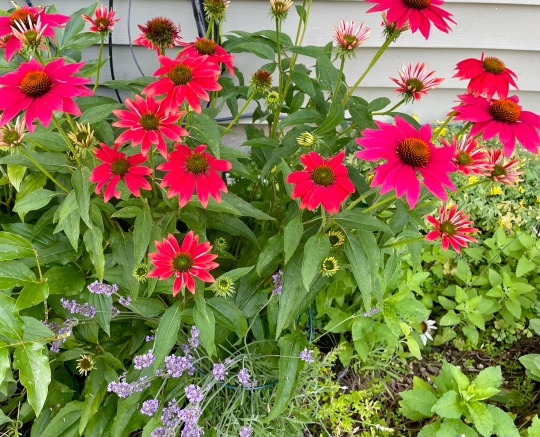
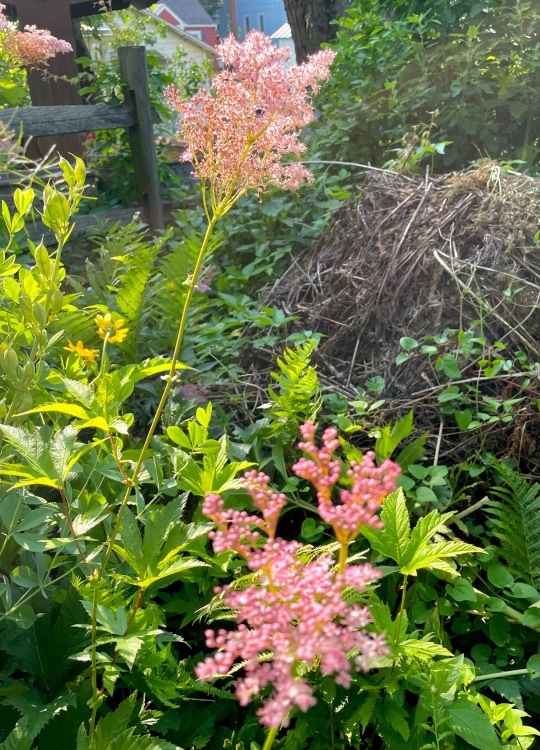
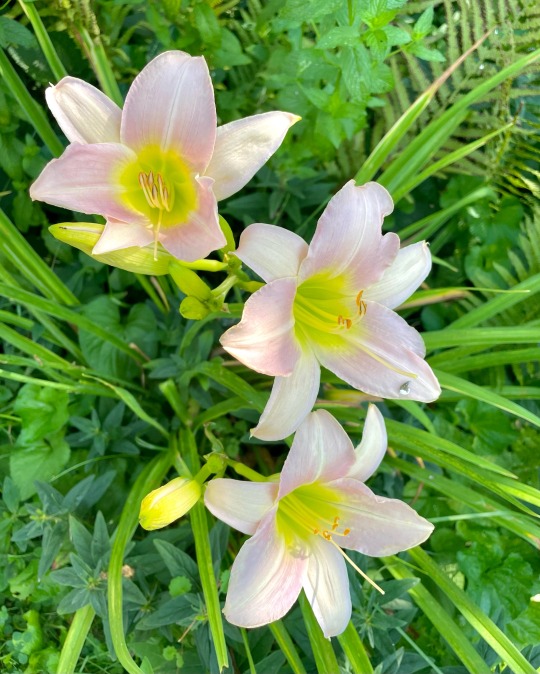
Recent blooms in the gardens: blackberry lily (Iris domestica), Echinacea, Filipendula rubra, and daylily ‘Catherine Woodbury’.
353 notes
·
View notes
Text
Perfect Prairie Meadow? More like Field of Broken Dreams by Bob Hill
Queen of the Prairie
My lust for the perfect prairie meadow show – aided and abated, of course, with the need for a new septic system – began with the lacy-pink flowers of Queen-of-the-Prairie, or Filipendula rubra.
I had not seen The Native Queen in all her glory until purchasing our history-worn Hoosier farmhouse and six acres of weeds. I’m not even sure now if that American native was already presiding out back in our long-neglected field, or was an early purchase by a would-be nursery owner who had no idea what the hell he was doing.
I just remember Her crown of cotton-candy flowers, deep pink and fragrant, gracefully floating above five-foot stems that one normally non-salacious garden site described as “naked.”
Any way you phrase it, it was love at first sight.
Laugh, if you must, but much of the same literature also mentions that Native Americans used Queen-of-the-Prairie as a treatment for various heart problems and as an herbal aphrodisiac.
I also vaguely remember reading of our early settlers perched in covered wagons resolutely headed west across our prairies while being mesmerized by acres of the floating pink flowers.
They also learned – no doubt from our Native Americans – that other less erotic uses for Her Highness included a cure for gout, water retention, bladder and kidney ailments, and diarrhea.
I have long wondered precisely what kind of research went into such herbal cures, and how many native plants were required before the patient got it right.
Which pretty much brings our new septic system into the story.
It begins as previous residents of our house apparently tired of walking 50 feet out the back door in January to seek one-holer relief. Some indoor plumbing with outside filtration seemed required.
Aster novae-angliae
This was back in a time before the EPA, county health officials and perforated plastic drainage pipe. Their disposal problem was temporarily solved with a concrete, hand-poured septic tank and brittle clay tile over which I planted – in total ignorance – a significant quantity of ornamental trees.
That drainage system lasted a lot longer than we had a right to expect, but about five years ago its imminent demise became all too apparent to anyone with a nose. A new septic system was installed by a fine company owned by a guy whose crew included his two sons and his daughter.
They very carefully installed about 300 feet of new lateral lines out in our back meadow, and well away from any woody ornamentals. The field hadn’t been farmed for at least 75 years. Their trench work fully exposed perhaps a quarter acre of deep, rich soil to a guy with a lifetime-lust for a wildflower meadow.
By sheer coincidence I was then also working on a story about a Kentucky company called Roundstone Native Seed on Raider Hollow Road in Hart County Kentucky.
The company was started about 25 years ago by two men – a father and son – picking seeds from a field of Indian grass while carrying five-gallon buckets. It’s since grown into a company selling thousands of pounds of seeds and thousands of plugs for about 300 species of regionally adapted flowers, grasses and legumes across much of the Eastern United States.
Off to one side of their business was a small greenhouse. There was no Queen-of-the-Prairie, but I did find hundreds of other plugs: Yarrow, milkweed, monarda, aster, rudbeckia, showy tickseed, partridge pea, coreopsis, prairie coneflower, boneset, and yes, Rattlesnake Master. I picked up what was possible in plugs, added a bunch of very fine seeds to the mix, and headed home to begin my meadow.
(L) Yellow coneflower (Ratibida pinnata) and wild bergamot (Monarda fistulosa). (R) Black-eyed Susan (Rudbeckia hirta) and fleabane (Erigeron species).
The soil was already bare. I carefully followed all instructions, twice killing emerging weeds with Roundup. I planted hundreds of plugs, purchased a hand-cranked seed spreader, diluted the seed with sand and, with joy in my heart, let em’ fly.
I watched it all grow like an anxious parent, mowed it all close to the ground the first year as directed, looked anxiously after the crop the second year, eager to spot the biennial and perennial wildflowers in full cry.
I could see the finished product in my mind; a blanket of low-maintenance color, the patterns shifting with the seasons, the ebb and flow of Mother Nature shopping for summer wear in Prada, a thing of beauty and a joy forever.
Some wildflower meadow experts recommended an annual burning of the site to kill off unwanted annual weeds and, perhaps, run off the rodents. For three consecutive years my windows of opportunity were lost by persistent rain.
The wildflower literature all waxed poetic about success by the third and fourth years; neighbors lined up to peer at the wonder of it all; birds, bees and butterflies happily flitting and flying about in nature’s glory. Better yet, generations of monarch butterflies would be calling home to Mexico to offer directions.
But it just ain’t happening. As I look out across my dream I see bursts of color amidst a vast landscape of, dare I say it, weeds. Save the ubiquitous Johnson grass, I don’t recognize most of it. I only know a few of my wildflowers. I’m mostly a woody plant guy lost in, well, the tall weeds.
I’m now thinking this is a case of willful ignorance meeting high expectations. God sows flowers and the devil sows weeds. All the literature on the various growing-a-prairie-meadow websites promised that once a garden was established – like in about five years – it would be a perfect and enduring combination of nature, design, ecological greatness, environmental genius and the meaning of life.
Humbug. But I’m not giving up. What’s life without some bitter disappointment? I do have a fine crop of thuggish, purple-top Ironweed, which tower in tribal triumph over my dismal, weedy wildflower patch.
I also have a couple of fine Queen-of-the-Prairie to sooth my soul. I have no idea where they came from, but they are doing very well out there in my dry, barren and very rocky parking lot, living large in a totally unprepared area among yucca and cactus where they come back every year.
And at least our septic system works.
Perfect Prairie Meadow? More like Field of Broken Dreams originally appeared on Garden Rant on June 28, 2017.
from Garden Rant http://ift.tt/2uhPqrQ
0 notes
Text
Perfect Prairie Meadow? More like Field of Broken Dreams by Bob Hill
Queen of the Prairie
My lust for the perfect prairie meadow show – aided and abated, of course, with the need for a new septic system – began with the lacy-pink flowers of Queen-of-the-Prairie, or Filipendula rubra.
I had not seen The Native Queen in all her glory until purchasing our history-worn Hoosier farmhouse and six acres of weeds. I’m not even sure now if that American native was already presiding out back in our long-neglected field, or was an early purchase by a would-be nursery owner who had no idea what the hell he was doing.
I just remember Her crown of cotton-candy flowers, deep pink and fragrant, gracefully floating above five-foot stems that one normally non-salacious garden site described as “naked.”
Any way you phrase it, it was love at first sight.
Laugh, if you must, but much of the same literature also mentions that Native Americans used Queen-of-the-Prairie as a treatment for various heart problems and as an herbal aphrodisiac.
I also vaguely remember reading of our early settlers perched in covered wagons resolutely headed west across our prairies while being mesmerized by acres of the floating pink flowers.
They also learned – no doubt from our Native Americans – that other less erotic uses for Her Highness included a cure for gout, water retention, bladder and kidney ailments, and diarrhea.
I have long wondered precisely what kind of research went into such herbal cures, and how many native plants were required before the patient got it right.
Which pretty much brings our new septic system into the story.
It begins as previous residents of our house apparently tired of walking 50 feet out the back door in January to seek one-holer relief. Some indoor plumbing with outside filtration seemed required.
Aster novae-angliae
This was back in a time before the EPA, county health officials and perforated plastic drainage pipe. Their disposal problem was temporarily solved with a concrete, hand-poured septic tank and brittle clay tile over which I planted – in total ignorance – a significant quantity of ornamental trees.
That drainage system lasted a lot longer than we had a right to expect, but about five years ago its imminent demise became all too apparent to anyone with a nose. A new septic system was installed by a fine company owned by a guy whose crew included his two sons and his daughter.
They very carefully installed about 300 feet of new lateral lines out in our back meadow, and well away from any woody ornamentals. The field hadn’t been farmed for at least 75 years. Their trench work fully exposed perhaps a quarter acre of deep, rich soil to a guy with a lifetime-lust for a wildflower meadow.
By sheer coincidence I was then also working on a story about a Kentucky company called Roundstone Native Seed on Raider Hollow Road in Hart County Kentucky.
The company was started about 25 years ago by two men – a father and son – picking seeds from a field of Indian grass while carrying five-gallon buckets. It’s since grown into a company selling thousands of pounds of seeds and thousands of plugs for about 300 species of regionally adapted flowers, grasses and legumes across much of the Eastern United States.
Off to one side of their business was a small greenhouse. There was no Queen-of-the-Prairie, but I did find hundreds of other plugs: Yarrow, milkweed, monarda, aster, rudbeckia, showy tickseed, partridge pea, coreopsis, prairie coneflower, boneset, and yes, Rattlesnake Master. I picked up what was possible in plugs, added a bunch of very fine seeds to the mix, and headed home to begin my meadow.
(L) Yellow coneflower (Ratibida pinnata) and wild bergamot (Monarda fistulosa). (R) Black-eyed Susan (Rudbeckia hirta) and fleabane (Erigeron species).
The soil was already bare. I carefully followed all instructions, twice killing emerging weeds with Roundup. I planted hundreds of plugs, purchased a hand-cranked seed spreader, diluted the seed with sand and, with joy in my heart, let em’ fly.
I watched it all grow like an anxious parent, mowed it all close to the ground the first year as directed, looked anxiously after the crop the second year, eager to spot the biennial and perennial wildflowers in full cry.
I could see the finished product in my mind; a blanket of low-maintenance color, the patterns shifting with the seasons, the ebb and flow of Mother Nature shopping for summer wear in Prada, a thing of beauty and a joy forever.
Some wildflower meadow experts recommended an annual burning of the site to kill off unwanted annual weeds and, perhaps, run off the rodents. For three consecutive years my windows of opportunity were lost by persistent rain.
The wildflower literature all waxed poetic about success by the third and fourth years; neighbors lined up to peer at the wonder of it all; birds, bees and butterflies happily flitting and flying about in nature’s glory. Better yet, generations of monarch butterflies would be calling home to Mexico to offer directions.
But it just ain’t happening. As I look out across my dream I see bursts of color amidst a vast landscape of, dare I say it, weeds. Save the ubiquitous Johnson grass, I don’t recognize most of it. I only know a few of my wildflowers. I’m mostly a woody plant guy lost in, well, the tall weeds.
I’m now thinking this is a case of willful ignorance meeting high expectations. God sows flowers and the devil sows weeds. All the literature on the various growing-a-prairie-meadow websites promised that once a garden was established – like in about five years – it would be a perfect and enduring combination of nature, design, ecological greatness, environmental genius and the meaning of life.
Humbug. But I’m not giving up. What’s life without some bitter disappointment? I do have a fine crop of thuggish, purple-top Ironweed, which tower in tribal triumph over my dismal, weedy wildflower patch.
I also have a couple of fine Queen-of-the-Prairie to sooth my soul. I have no idea where they came from, but they are doing very well out there in my dry, barren and very rocky parking lot, living large in a totally unprepared area among yucca and cactus where they come back every year.
And at least our septic system works.
Perfect Prairie Meadow? More like Field of Broken Dreams originally appeared on Garden Rant on June 27, 2017.
from Garden Rant http://gardenrant.com/2017/06/perfect-prairie-meadow-more-like-field-of-broken-dreams.html
0 notes
Photo








Filipendula rubra in-situ as a tall grass fen obligate.
Photographs of Queen of the Prairie from Pearl’s fen Late July 2020,
They recently removed so much honeysuckle(2 years ago) and dead ash here and it looks great.
Dormant seed has returned from the honeysuckle hell and has germinated making this one hell of a spectacle once again.
Spotted Joe Pye and sweet Joe Pye cameo too, Eutrochium maculatum and Eutrochium purpureum ( these two species in sympatry can be hard to tell apart. but spotted has a hairy stem with little slit like spots and purpureum is glaberous with a slight epicuticular wax.) Also see if you can spot wetland dodder, Cuscuta gronovii ,attacking some Joe.
#Filipendula rubra#filipendula#botany#wildflowers#nature#nature photography#cottagecore#plantblr#ohio
22 notes
·
View notes
Photo
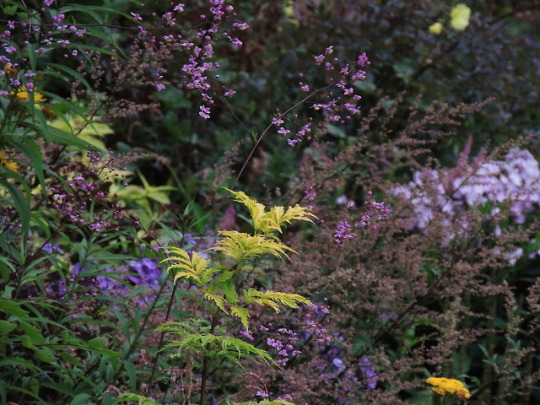

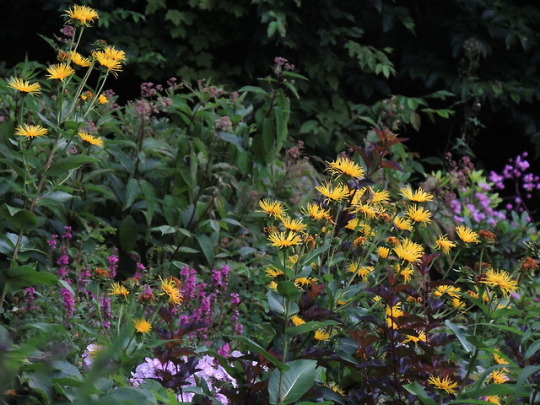
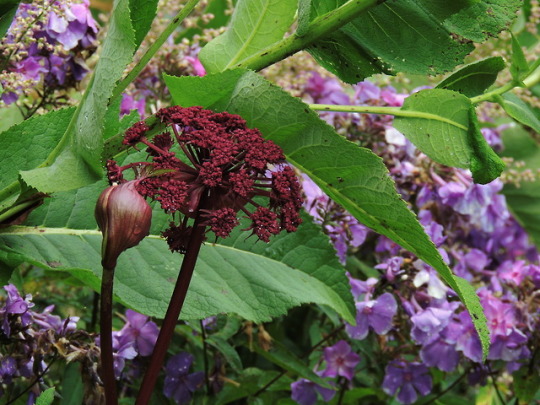


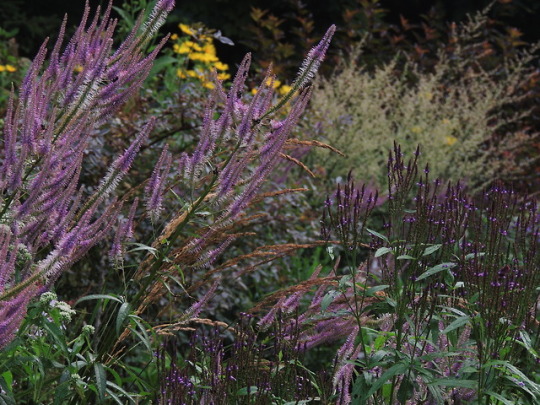
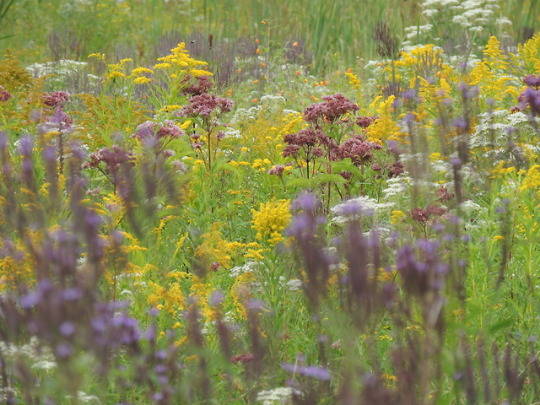

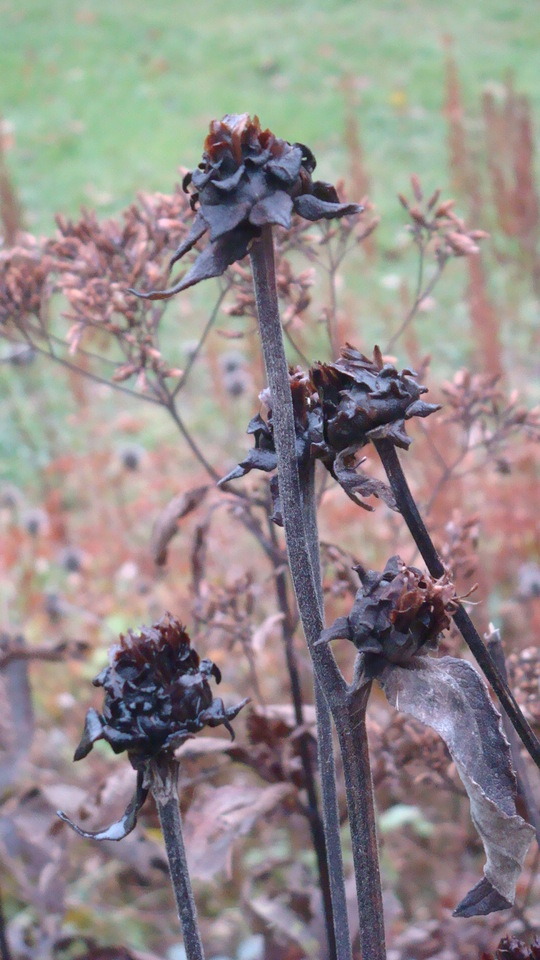
Plants for a moist meadow:
In mountainous regions it is not always whether a piece of land lies high or low that determines how moist the ground is but the nearness of underground springs. Not only are many of the plants pictured great companions but happen to thrive in moist conditions. More than this, when they have the conditions they like they are carefree and very reliable. This goes for the short-lived perennials and reseeding biennials listed here. These plants are also ideal for a perennially moist bit of lowland, even partial shade.
Thalictrum rochebrunianum. This slender giant likes rich moist soil. It can be used at the back of the garden where it can reach heights of 8ft, but it's slender profile and scant foliage makes it an ideal screening plant for anywhere in the garden. It's smooth purple gray stems are like a delightfully gloomy bamboo screen through which to view the garden. The long lasting cloud (a veritable chandelier) of lavender flowers with plushy pale yellow centers hang upside down and display their airy charm for weeks on end in late summer. The plants pictured in the top image are on the young side. A mature specimen is an amazing sight. Can be short-lived but will reseed gently.
Artemesia lactiflora 'Rosenschleier': This one is also pictured in the top image. White in bud throughout July, then soft rose, to russet pink in August. Stems color strongly wine red to near black in full sun. Making a striking internal contrast. This a perfect companion for Thalictrum in a pastel harmony or with any number of contrasting late bloomers like Inula helenium or red and orange Heleniums (which also hate dry conditions). Makes a large stable clump that seldom needs dividing, unless it begins to dwindle (which it only seems to do in times of drought). Sterile.
Inula helenium (Elecampane): 3rd image. This tall herb with medicinal roots is a somewhat coarse plant with very large arching, dentate basal leaves, but it has the most delicately petaled daisy flowers in bright yellow, with brandy-colored centers. Beloved by pollinators. Like the Artemesia it is long lived in moist conditions. It will reseed, so cut back the stalks when they are done flowering if you don't want those giant basal leaves popping up elsewhere. I leave them up because the finches and juncos love the seeds and the black seed pods (if you can harvest a few before the birds get at them) are quite decorative for fall arrangements, especially with Chinese Lanterns. They look like GOT quality evil magic wands or scepters (bottom), in the event your inner Melisandre wants to cast a spell on your neighborhood John Snow.
Eupatorium perfoliatum and E. maculatum: 3rd from the bottom. White boneset and Joe Pye Weed are the backbone of many moist or wet meadows here in the Northeast. Mother nature has supplied a gorgeous palette of strong contrasts in this wild setting off Rte 4 in Mendon, Vermont. There is Solidago (goldenrod), Verbena hastata along with Joe Pye and Boneset, and quite a bit of the annual wild Jewel Weed (Impatiens capensis). What would be considered the matrix plants of this wild meadow are a combination of cattail rushes and sedges, especially species of Cyperus (nutsedge).
Verbena hastata (blue vervain): This wonderful meadow plant is iconic in my memory of childhood fields. It's delicate candelabras give a fine vertical lift in contrast with horizonatal forms. Short-lived. A plant that can come and go in the wild, is somewhat short-lived in the garden and depends on its survival on being able to reseed. It is a delightful and an effective spontaneous element in the garden. Somewhat cyclical. Thrives in moist conditions and can seem to disappear in places for a time, only to crop up again when the conditions are right. Thus it is never a threat to take over a space as some reseeding plants can.
Astilbe chinensis taquetti superba: (image 6) This tall Astilbe does just fine in full sun if it has adequate moisture. The best new variety of this species is the rich flowering Purple Candles. Masses of this are quite dramatic and contrast beautifully with grasses.
Veronicastrum virginicum 'Fascination': (images 2, 5 and 7) A sturdier echo of the candelabra forms of Blue Vervain, it is thus a natural companion (as seen 3rd from the bottom). There are many worthwhile forms of Veronicastrum that are more upright and compact than 'Fascination' (Alba, Rosea, Adoration, Red Arrows) but there aren't any others that are quite so, well, fascinating. Mobbed by bees that are so enthralled they remain all night long on the plants. The whorled foliage viewed en masse makes this exceptionally beautiful even when it is not in bloom.
Filipendula purpurea elegans: (2nd from bottom) This plant must have moisture, or afternoon shade if it is on the dry side. Established plants have survived very dry conditions, but they never look their best. At my sister's in CT they simply burned up and withered during a droughty summer (and that was part shade). Definitely prefers cool moist conditions. The rewards are the beautiful mounds of deeply cut, crinkled foliage and the rich frothy pink flowers in August. The seedheads last longer and are more beautiful than the flowers in my opinion, creating a haze of red in late August and September. Not as dramatic as F. rubra but it also won't scramble through your garden.
Angelica gigas (Korean angelica): 4th image. This one will grow in standing water, even a gently flowing streambed or ditch. If you have a ditch or swale you want to beautify this biennial will reseed again and again in moist conditions. Your neighbors will develop swale envy. Blooms in as little as 3 or 4 hours of sun, likes bright shade too, or full sun, so long as it is moist. A definite rain and woodland garden must. Very hardy, spectacular. Up to 6ft tall giants in rich soil. A plant that will stop visitors in their tracks.
59 notes
·
View notes
